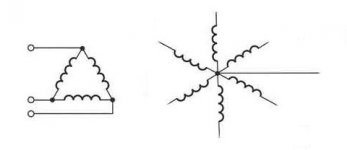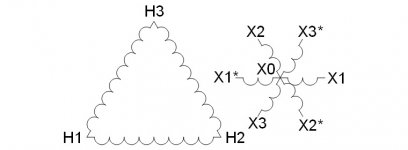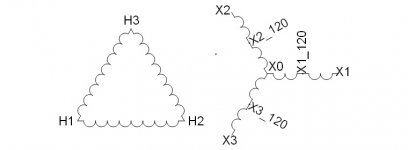Why you just described a wagon wheel!Not familiar with the standards for drawing transformer coil arrangements, here's a textual description in case that helps:
For a 3 phase primary supply, you have 3 available voltage sources that are 120 degrees apart. Then you use (3) single phase transformers that have center tapped secondaries, one on each of the 3 primary voltage sources, to get (3) 120/240V services that are also 120 degrees apart. Connect all (3) center taps and earth that point. You now have (6) different L-N waveforms, 120V in magnitude, with the pairwise phase shifts comprising all multiples of 60 degrees. Which I guess we are calling hexaphase, although I would still say it is a 3 phase system. [Just as 2-phase has (4) different L-N waveforms, each 90 degrees apart.]
Cheers, Wayne

Last edited:



